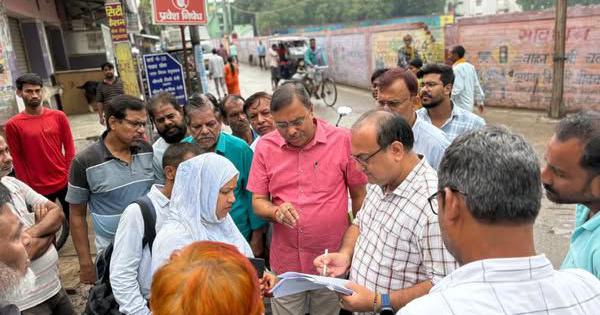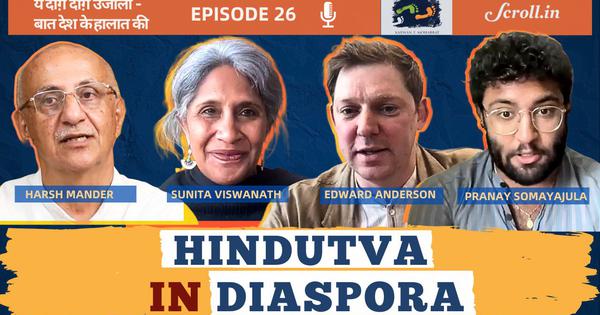Constitution Day of India: What is it and why do we celebrate it?
Constitution Day is celebrated on 26th November every year to commemorate the adoption of the Constitution of India.

Constitution Day, also celebrated as National Law Day (or Samvidhan Diwas) in India, is observed on 26th November every year to commemorate the adoption of the Constitution of India. On 26th November 1949, the Constituent Assembly formally adopted the Constitution of India. It came into force on 26th January 1950 that is observed as Republic Day.
History of how the Constitution of India came into being:
The two-month period between the adoption and enforcement of the Constitution was used for a thorough reading and translation from English to Hindi. The Constituent Assembly met for 166 days spread over two years, 11 months and 18 days before the Constitution was adopted.
The members of the Constituent Assembly signed two hand-written copies of the document (one each in Hindi and English) on January 24, 1950. Two days later, the Constitution of India became the law of the land. There were several critical issues debated including language, rights, minorities, governance structures.
On November 25, 1949, the day before the Constituent Assembly wound up its proceedings, BR Ambedkar made a moving speech. It ended with three warnings for the future.The first was regarding the place of popular protest in a democracy. “One must abandon the methods of civil disobedience, non-cooperation and satyagraha,” he said.
The second warning dealt with the unthinking submission to charismatic authority. “Bhakti in religion may be the road to salvation of a soul. But in politics, bhakti or hero worship is a sure road to degradation and to eventual dictatorship,” Ambedkar said.
His final warning was that Indians should not be content with political democracy as inequality and hierarchy were still embedded in Indian society. “If we continue to deny it (equality) for long, we will do so only by putting our political democracy in peril,” he said.
Significance of Constitution Day 2019:
26th November was marked as the Constitution Day of India by Prime Minister Narendra Modi in the year 2015 as a part of year-long celebration of the 125th birth anniversary of Dr B R Ambedkar. Constitution Day of India aims to bring awareness on the importance of the Indian Constitution and its architect, Dr B R Ambedkar.
Ambedkar was a renowned social reformer, politician and jurist and is also called the Father of Indian Constitution. He was appointed as the chairman of the constitution drafting committee on August 29, 1947.
Preamble to the Constitution of India:
“WE, THE PEOPLE OF INDIA, having solemnly resolved to constitute India into a SOVEREIGN SOCIALIST SECULAR DEMOCRATIC REPUBLIC and to secure to all its citizens:
JUSTICE, social, economic and political;
LIBERTY of thought, expression, belief, faith and worship;
EQUALITY of status and of opportunity;
and to promote among them all
FRATERNITY assuring the dignity of the individual and the unity and integrity of the Nation;
IN OUR CONSTITUENT ASSEMBLY this twenty-sixth day of November, 1949, do HEREBY ADOPT, ENACT AND GIVE TO OURSELVES THIS CONSTITUTION.”
The constitution declares India a sovereign, socialist, secular, democratic republic, assuring its citizens justice, equality and liberty, and endeavours to promote fraternity. The original 1950 constitution is preserved in a helium-filled case at the Parliament House in New Delhi. The words “secular” and “socialist” were added to the preamble in 1976 during the emergency.
The Constitution of India lays down the framework demarcating fundamental political code, structure, procedures, powers, and duties of government institutions and sets out fundamental rights, directive principles, and the duties of citizens. It is the longest written constitution of any country on earth.
It is influenced by other constitutions. The concepts of Liberty, Equality, and Fraternity were taken from the French Constitution. The concept of five-year plans was taken from the USSR. The Directive Principles were taken from Ireland. The laws on which the Supreme Court functions were taken from Japan.
Various departments of the Government of India celebrated the first Constitution day in 2015. The preamble of the constitution was read in all schools by all students. In addition, there were quiz and essay competitions both online and offline on the subject of the constitution of India. There was a lecture on salient features of the constitution in each school. The Department of Higher Education requested various universities to arrange mock parliamentary debates in colleges.
This year, President Ram Nath Kovind will be reading the Preamble at 11.00 am which will be telecasted live on state-run media. The University Grants Commission has asked educational institutions to organise Preamble reading session in limited capacity under Covid-19 norms.
The National Museum of Natural History along with its regional museums will organise various competitions and activities at the school/college level to commemorate Constitution Day.














